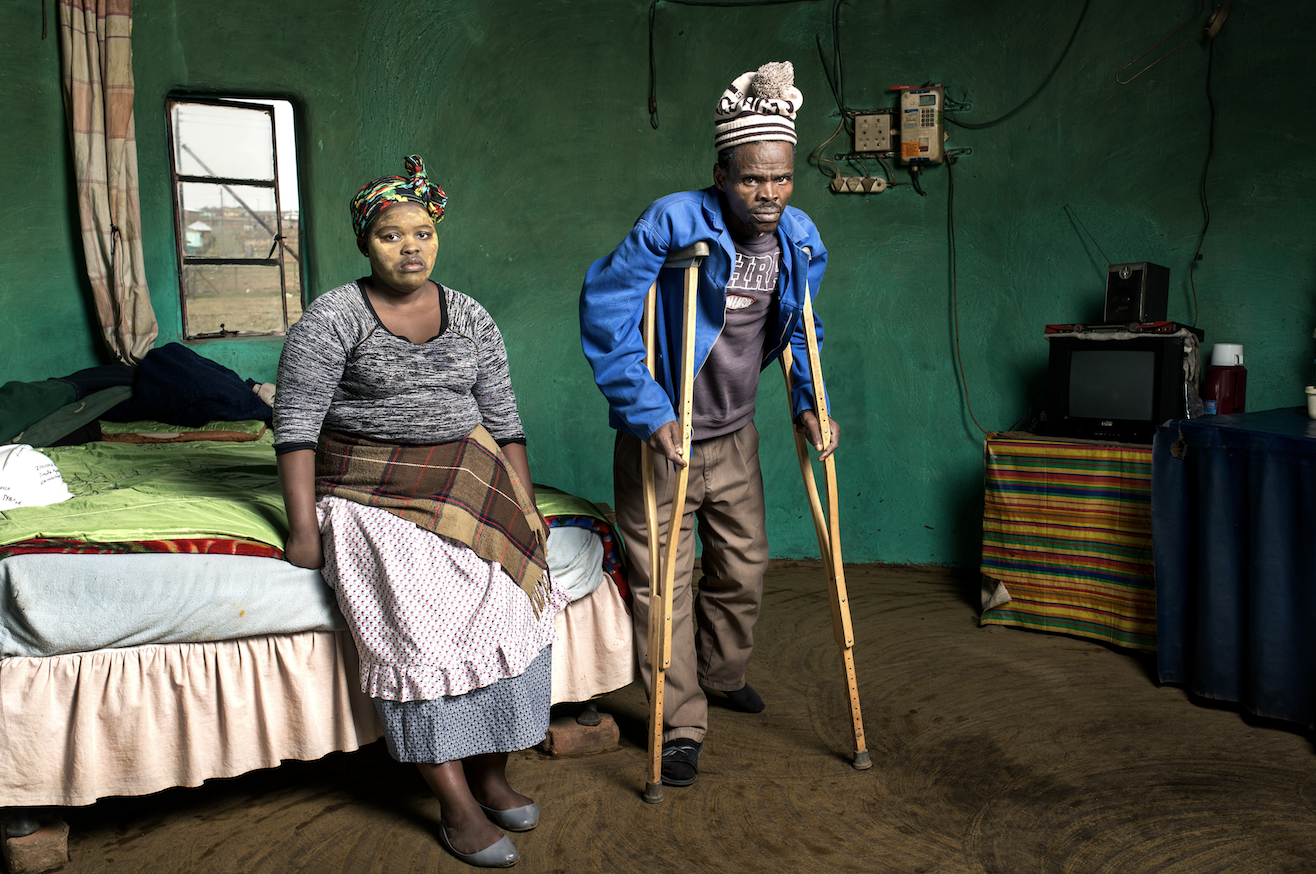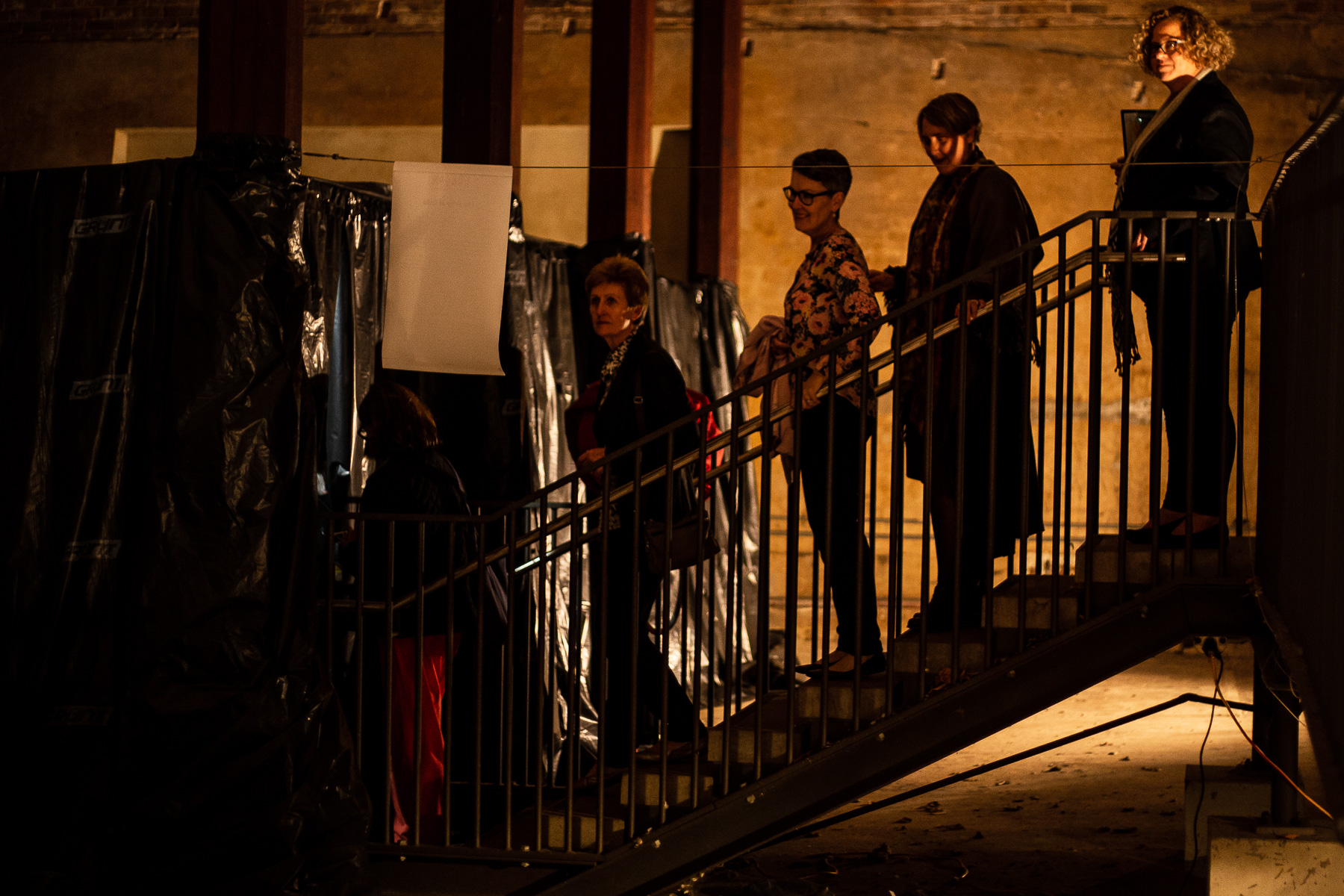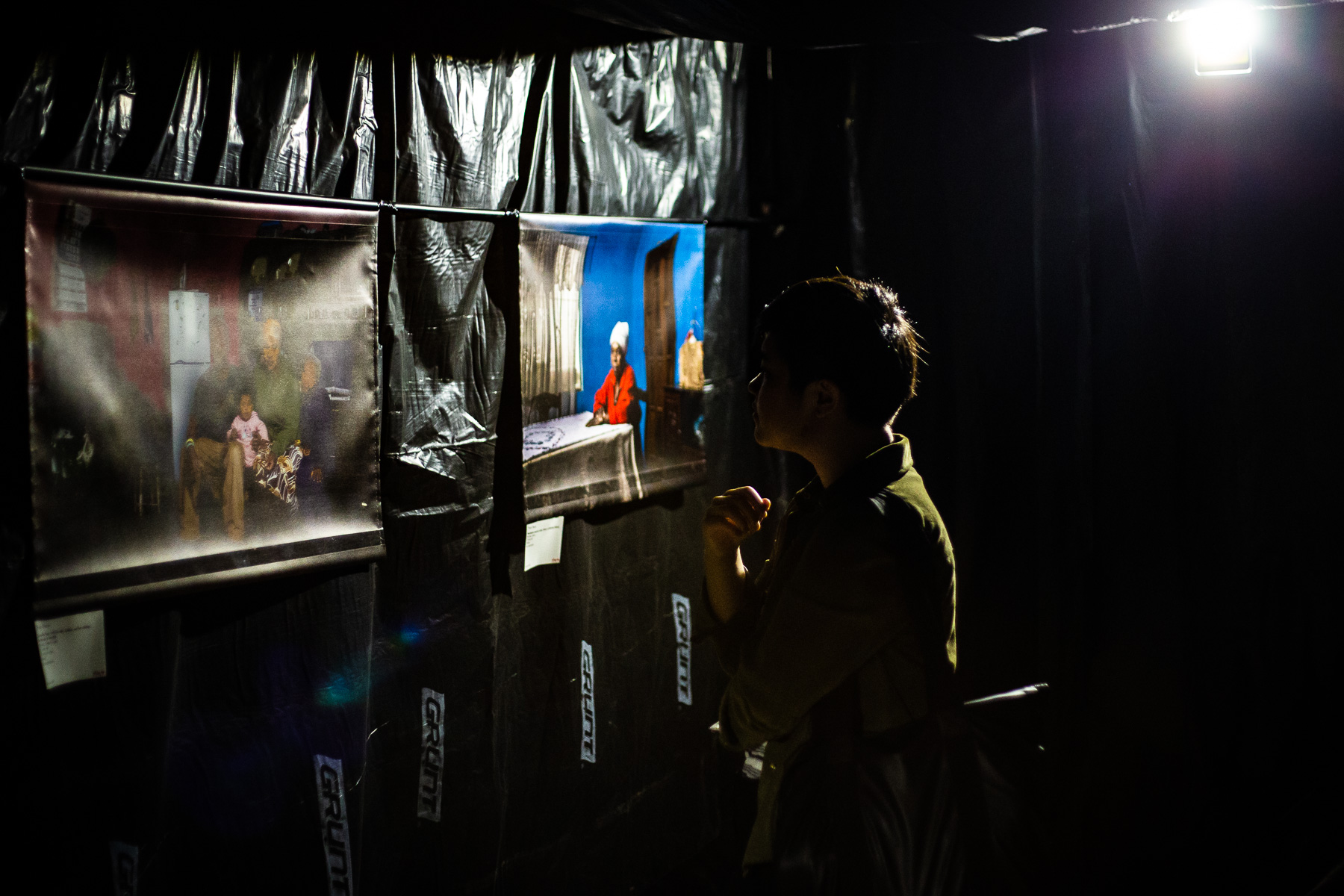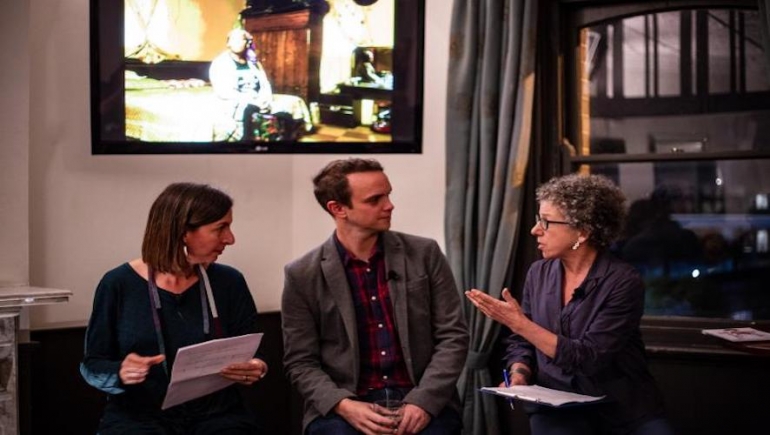Following a tour of the Head On Photo Festival exhibition The Price of Gold on 3 May, photographer Thom Pierce joined Associate Professor Beth Goldblatt and Professor Andrea Durbach for a moving discussion on the health impacts of gold mining on South African mineworkers and their families.
The special event was supported by The George Institute for Global Health and Maurice Blackburn Lawyers.
The men Pierce photographed are parties in the largest class action ever brought in South Africa.
Hours after our discussion, lawyers representing thousands of workers announced they had finally signed a $US400 million settlement.
Here, Pierce talks about the personal and wider impact of his project, The Price of Gold.
 Patrick Sitwayi and Asive Bingwa, 2015. Copyright: Thom Pierce
Patrick Sitwayi and Asive Bingwa, 2015. Copyright: Thom Pierce
Can you tell me about Patrick Sitwayi and Asive Bingwa, and the experience of meeting them?
Patrick Sitwayi was one of 56 miners and widows that I met on my journey to make the series ‘The Price of Gold’. I drove over 7000km in a 20-day period to find and photograph all of the people who were named in the court papers for the class action lawsuit against the gold mines in South Africa. Everyone was photographed at home and often with members of their family that they lived with or who cared for them. Mr Sitwayi lived with Asive Bingwa and other members of his family. The room that they are photographed in was one of a few small round rooms that make up the homestead. It is made from mud walls and a thatch roof. As with most of the people that I met on this trip, Mr Sitwayi was sick and angry with his predicament.
It is incredibly sad to put yourself into a situation where you are meeting with people who have been treated so badly, to have to engage each one of them in a conversation about their ailing health and their lack of ability to earn a living.
I am always thrown by how readily people accept their lot, how they are so downtrodden that it becomes an expectation that they will be treated badly. Through the court case the miners were given some hope and a chance to regain some dignity, I think that they were reminded that it was not okay for them to have been treated in such a way. Mr Sitwayi was no exception. He was proud of his work, that he earned money to send home. He was proud of his family and he spoke warmly about the mine. He did not resent the work that he had done, only the way he had been treated when he got sick and, in retrospect, the bad conditions in which they were forced to work. I spent about 2.5 hours with them that day, and the whole time that we talked and photographed, two babies slept on the bed just outside the view of the camera.
 Photo: Diane Macdonald
Photo: Diane Macdonald
Why was it important to you to photograph the miners with their carers, and in their homes? What did it reveal to you?
The carers are usually a member of the immediate family, usually women, and they are a vital part of the story. The fact that a miner is sent home without compensation and without the skills or health to work impacts heavily on the people who have to care for them. Very often it becomes the woman who has to support the family financially, as well as raising the children and caring for her sick husband or father. Work is not easy to come by for anyone and the women are no more able to find work than the men, but what they do have is their health. So, they bring in what little they can during the day and then care for the sick members of the family at night.
It is an incredibly hard life that has been made so by the simple fact that their husband went to find work, hard work, that took them away from their family for months.
The work paid them badly and made them sick, and when they were too sick to work they were sent home with little to no compensation, because they were of no use anymore. It is hard for everyone, all of the family, and that hardness can be seen in the homes. We need to know how people live, the reality of their lives and to see inside their homes and the people they live with and love. In each house there are details that we recognise, a bed, a stove, a photograph on the wall. Each detail provides a chance for the viewer to connect in some way with subject. We see the items that make up a home and we empathise, we imagine what it would be like, and we engage with our shared humanity for a moment.
 Photo: Diane Macdonald
Photo: Diane Macdonald
Why is it important to you to work with civil society groups and NGOs on human rights issues?
I like to work on projects around human rights issues but I am also the first to acknowledge that I am not an expert. One of main strategies with my work is to surround myself with people who are experts. I like to take the hard work of an NGO, Civil Society Organisation or academic institution and create something that is accessible and impactful. I come with an enthusiasm for the subject but I rely on others to help make the project a success. The work is only half done when the project is made, there is no use in making the effort if the work does not get seen, so it is always a partnership with different organisations to get the work out there and in front of people. I like to work with organisations that are proactive, that will push for what they believe in and aren’t just ticking a box to please their funders.
There is team work involved in every project and I would not have made a single piece of impactful work if it wasn’t for the hard work of researchers, campaigners and activists behind the scenes.
The Price of Gold was made in collaboration with Section 27 and the Treatment Action Campaign, two very influential and hard-working organisations. They had a huge influence on the project right from the outset, they knew what they wanted to say and they had lots of great ideas of how to say it. My job was to make get it made and make it as engaging as possible. I am so excited about projects that have a meaning and an impact deeper than a beautiful image and working with great organisations gives me access, knowledge, support and ideas that I wouldn’t have on my own.
